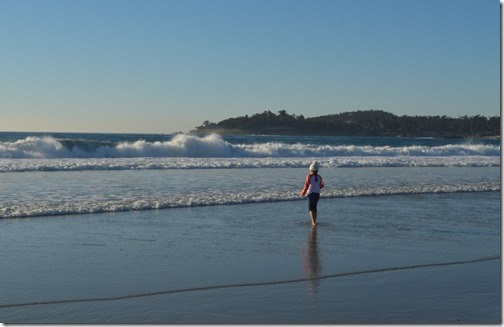Weather is a key component of any location. I’ve seen some extremes in weather. Knowing the weather situation is extreme is sometimes hard when you are visiting a place for a brief time.
The temperature outside today in Monterey, California is going to be 70°F. The temperature for the past six weeks has been around 65° to 70°F as a daytime high nearly every day. The temperature drops most nights to 40° to 55°F.
Is this California paradise with an ocean view?
The last rainfall along California’s Central Coast from Monterey County to San Francisco was December 24, 2014. That is six weeks with no measurable rain.
No San Francisco rain in January 2015, first time in 165 years.
January 2015 was the first January with no measurable rain in San Francisco and Monterey since records were kept dating back to 1850. Seems like Monterey should have older records since it has been occupied by Spanish and Mexicans since 1769.
This data is from National Weather Service San Francisco-Monterey area reports. From north to south, San Francisco averages 4.5 inches of rain in January. Santa Cruz 6.28 inches and Monterey 4.40 inches of rain. Kentfield, about 20 miles north of San Francisco averages over 9 inches of rain in January. January 2015 saw a trace of rain in Kentfield, Marin County. None of the other places had any measurable rain in January 2015.
Six weeks without rain from Monterey County to Kentfield in Marin County covers a distance over 200 miles of California coastline. The last rain in San Francisco or Monterey was Christmas Eve 2014.
If you are not familiar with this area, then you might not know that nearly all the annual rainfall on the Central California coast falls from November to March in the rainy season. Some years the rains come earlier, starting in early September and sometimes there are heavy rain storms in May. Generally though, May to October are almost all dry days and November to April is also mostly dry, except when winter storms cross the Pacific Ocean and hit the central coast. Weather patterns this year are keeping the winter rain storms farther north in Oregon and Washington.
Southern California relies on the same winter storm pattern for water. Downtown Los Angeles receives more than 75% of its annual rainfall in the four months from December to March. with the primary difference being occasional monsoonal moisture in summer months when the hurricanes from Mexico veer north and cross the southwest USA. Those summer rains rarely reach as far north as Monterey.
California’s water needs are met from Sierra and coast range snow melt. California holds snow melt from the high peaks collected in reservoirs around the state. No rain in January means no mountain snow in the high Sierras, 200 miles due east of San Francisco and the California Central Coast, and less snow melt available for reservoirs in the spring to meet the water demands of the dry summer season in California. Snow pack in most California mountain places is currently at less than 25% an average year.
San Francisco and Central Coast California had record December rainfall with many areas picking up 9 to 15 inches or more of rain, more than 25% of average annual rainfall and close to 50% for some local areas. Most areas are still above average rainfall for 2014/15 at this point, but they won’t remain above average without a near normal rainfall for February and March 2015.
Good news around here is the Pebble Beach ATT Pro-Am 2015 celebrity golf tournament is scheduled for next week. The golf tournament is often a magnet for Pacific winter rain storms. The rain is scheduled to return Thursday night for this weekend when several inches of rain are forecast for the coastal mountain regions with more Sierra snow.
Monterey might even pick up an inch of rain.
At least California is not melting like Iceland.


